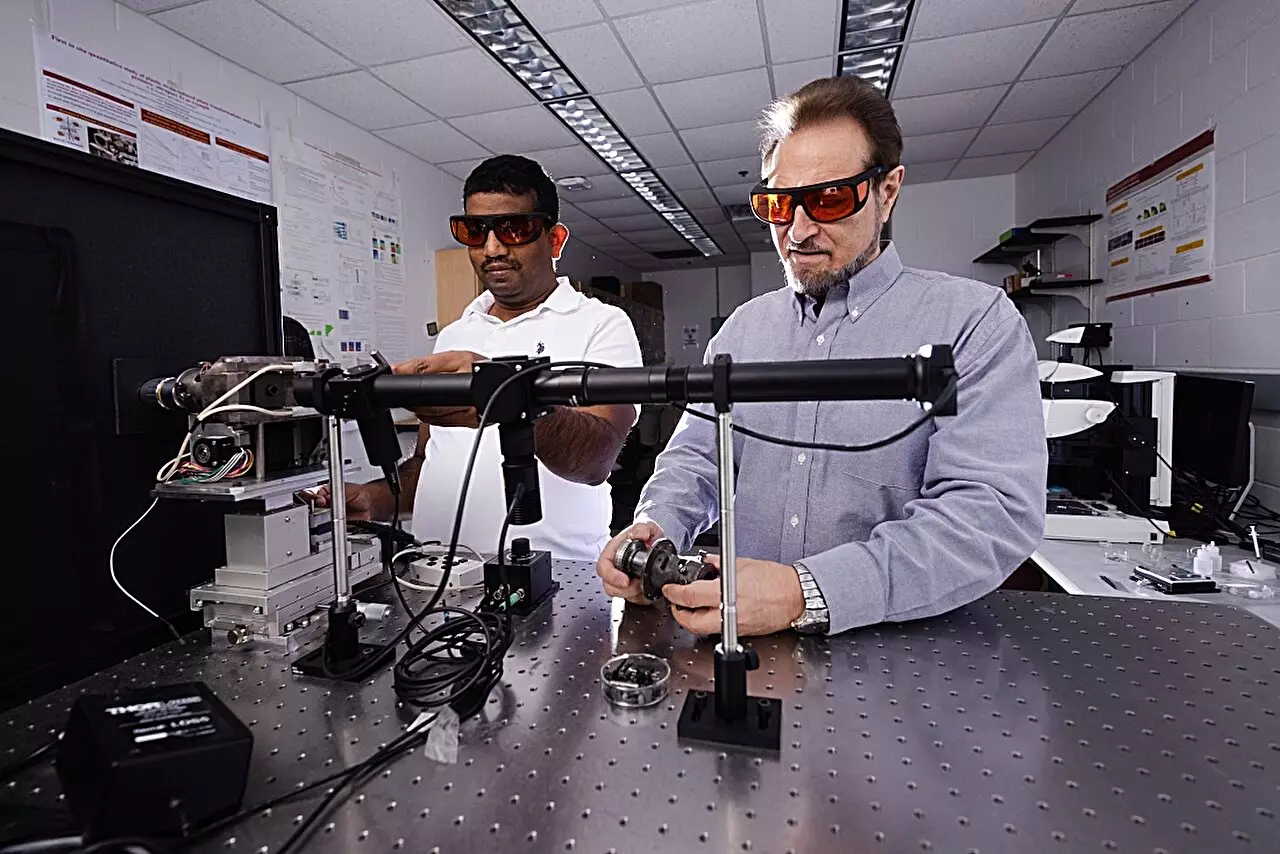In the realm of material science, the ability to manipulate and understand the behavior of substances under varying conditions is crucial for the development of new technologies. The journey of Valery Levitas, a distinguished engineering professor at Iowa State University, began in 1999 when he migrated from Europe to the United States with a unique tool: a rotational diamond anvil cell. This instrument, designed to exert extreme pressures and shear on materials, has become instrumental in revealing the intricacies of material transformation—particularly that of silicon, a vital component in electronics.
Silicon is a cornerstone material for the electronics industry, found in everything from computer chips to solar panels. Recently, Levitas and his team embarked on a pioneering study, placing silicon under both high pressure and plastic shear deformation to examine how its crystalline structure changes. This investigation is particularly noteworthy as it combines elements of advanced mechanics, physics, material science, and applied mathematics—a multidisciplinary approach that underscores the complexity of material behavior.
Previous research has explored silicon’s phase changes predominantly under high-pressure conditions without considering the effects of applied shear deformation—a variable that can significantly alter the microstructural properties of materials. By introducing plastic strain into the experimental framework, Levitas’s team aimed to discover new phase transformations that could yield enhanced material characteristics.
The researchers employed various particle sizes of silicon in their experiments, measuring down to nanoscopic dimensions. Conducting in situ X-ray diffraction experiments allowed them to assess how silicon responded to pressures previously thought only achievable under extreme conditions. Remarkably, their findings indicated that silicon could transition from its Si-I to Si-II crystal phases at a significantly reduced pressure of just 0.3 gigapascals, in stark contrast to the 16.2 gigapascals required under normal high-pressure scenarios.
This newfound ability to induce phase transformations at lower pressures opens up exciting avenues for practical applications, as substantial pressure is often impractical for widespread industrial use. Levitas emphasizes that the real objective of these experimental conditions is not merely to deform materials but to fundamentally alter their microstructures. This can lead to new phase characteristics that present valuable properties for industrial applications.
The evolution of silicon’s structure and properties through such innovative methodologies has far-reaching implications for technology. The ability to realize different crystal lattice structures leads to materials with distinct electronic, optical, and mechanical properties. The potential to produce nanostructured materials or nanocomposites tailored for specific applications is particularly exciting for industries focused on pushing the boundaries of existing technologies.
Levitas and his team’s approach underscores the importance of exploring uncharted territories within material deformation. Their research not only challenges traditional norms surrounding the pressure required for phase transformations but also provides insights into the efficient use of resources and energies in material production.
After two decades of rigorous exploration and hypothesis, Levitas’s research trajectory exemplifies how curiosity-driven science can yield unexpected breakthroughs. By venturing into the realm of low-pressure transformations, he and his collaborators have reshaped the landscape of how scientists and engineers view material behavior under stress. The implications of such work extend beyond theoretical knowledge; they promise tangible advancements in the fields of electronics and materials engineering that could redefine existing paradigms.
As researchers continue to delve into the complex interactions between pressure, shear deformation, and material properties, it is clear that the future of material science holds thrilling possibilities, driven by innovative methodologies and interdisciplinary collaboration. The ongoing investigations into silicon’s unique responses serve as a compelling testament to the potential for discovery—inviting further exploration and application of these transformative principles across various industrious fields.



Leave a Reply